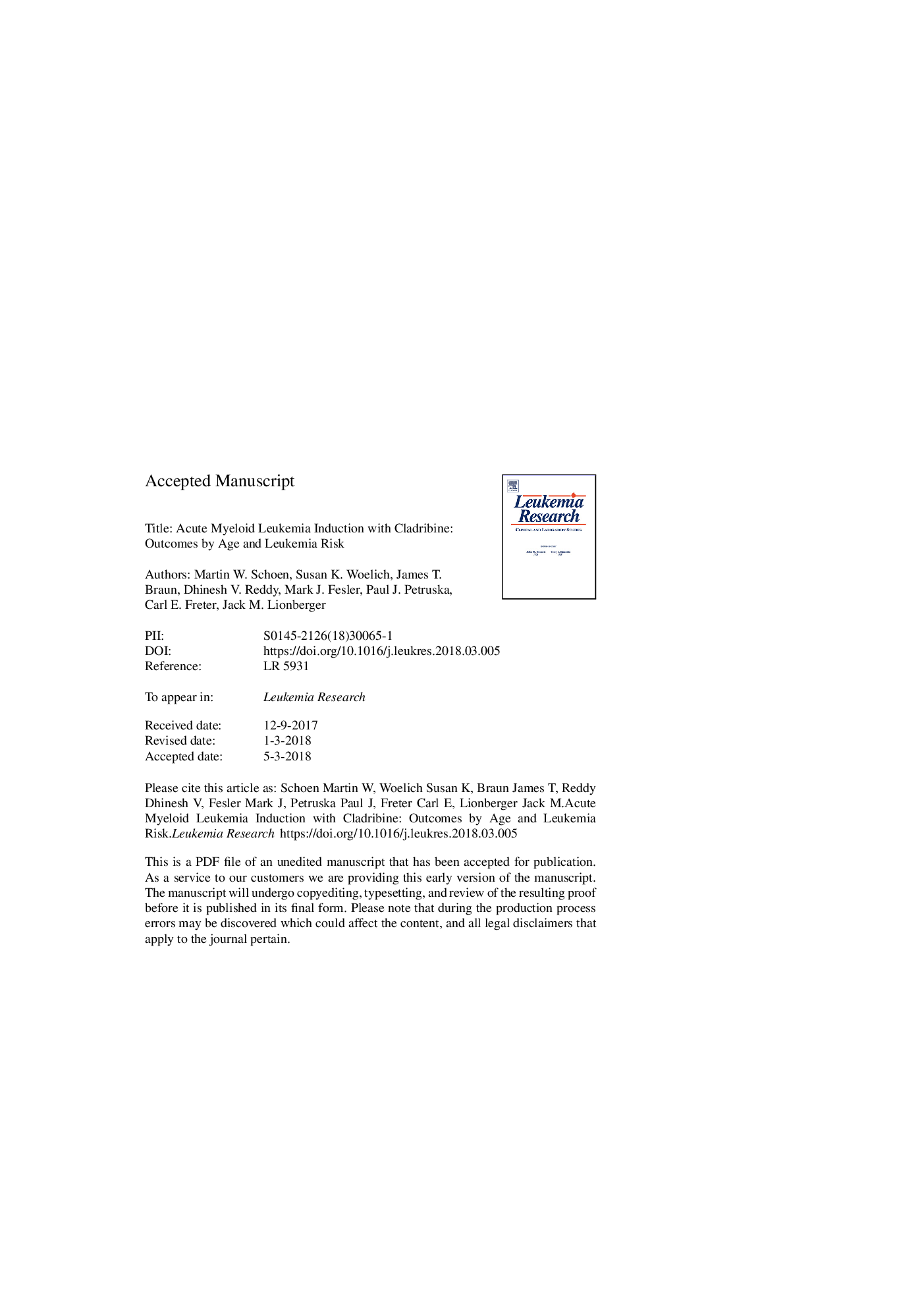| Article ID | Journal | Published Year | Pages | File Type |
|---|---|---|---|---|
| 8453338 | Leukemia Research | 2018 | 25 Pages |
Abstract
Acute myeloid leukemia (AML) induction traditionally includes seven days of cytarabine and three days of an anthracycline (7â¯+â¯3). Because of evidence of increased efficacy of cladribine combined with this regimen, we conducted a retrospective analysis of 107 AML patients treated with idarubicin, cytarabine and cladribine (IAC) at our institution. Complete remission (CR) occurred in 71%, with overall response of 79%. One-year survival overall was 59%, with 47% (27/57) among patients â¥60 years old and 72% (36/50) in those <60 (Relative Risk [RR] 1.9, 95% CI 1.2-3.2). Median overall survival was 17.3 months in all patients and Cox proportional hazard ratio (HR) for death was 2.2 (95% CI 1.3-3.6) for age â¥60 years compared to <60â¯years. One year survival was 100% among favorable NCCN risk patients versus 64% in intermediate-risk and 35% in poor-risk patients (pâ¯<â¯0.001). HR for death in intermediate- risk (4.2, 95% CI 1.5-12) and poor-risk (8.4, 95% CI 3.0-24) compared to favorable risk AML was higher than that associated with age â¥60 years (HR 2.2). We conclude that IAC is an effective AML induction regimen, NCCN leukemia risk predicts survival better than age in our population, and high intensity regimens can be justified in selected older patients.
Keywords
Related Topics
Life Sciences
Biochemistry, Genetics and Molecular Biology
Cancer Research
Authors
Martin W. Schoen, Susan K. Woelich, James T. Braun, Dhinesh V. Reddy, Mark J. Fesler, Paul J. Petruska, Carl E. Freter, Jack M. Lionberger,
